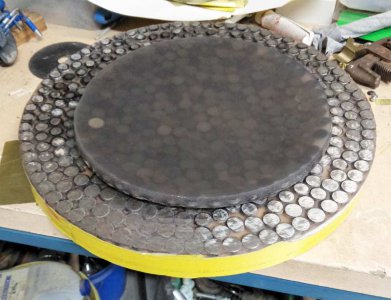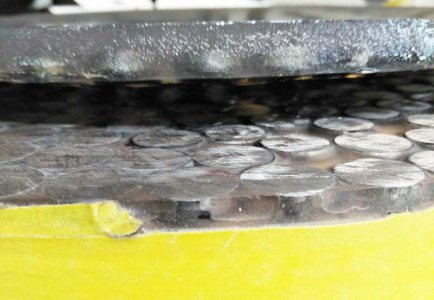Eventually made the tool to grind the large tool.
This time I used plaster and nuts, the idea being the plaster would sit in the middle of the nuts holding them in place.
Heres the plaster tool sitting on the large tool.
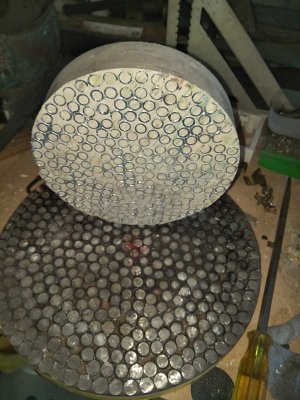
Whilst waiting for the plaster to fully dry I made a metric spherometer reading 0.01mm per division.
This is used to measure how deep the curve is (sagitta)
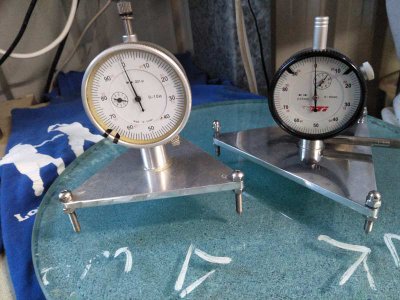
Now to work, this is the two tools being ground into each other to get the curve correct.
Unfortunately my grits havnt arrived yet so I'm using 400 silicon carbide grit which is too fine for this stage, I need 80 grit.
So a quick grind of 40 mins with a 15mm overhang, 6Kg weight and a 3mm back and forth sweep.
A quick check shows the two disks do not repeat the stroke until 17 full revolutions so it shouldnt grind a pattern into the surface.
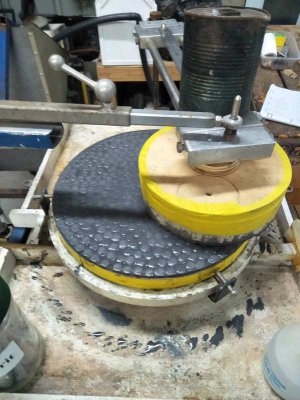
by off setting the top tool the spin at the edge is almost the same but it spins faster in the centre thus making the hollow.
The bottom tool has been pre generated roughly but still needs a fair bit of grinding.
The two surfaces after this test grind, the shiny steel hasnt been touched yet so a fair way to go.
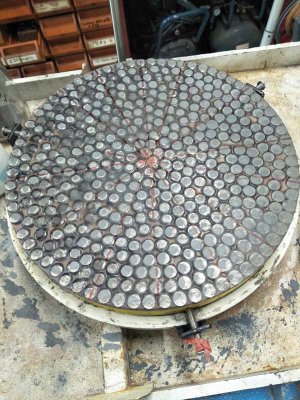
Those darker grey bits are from this grind so no full contact yet.
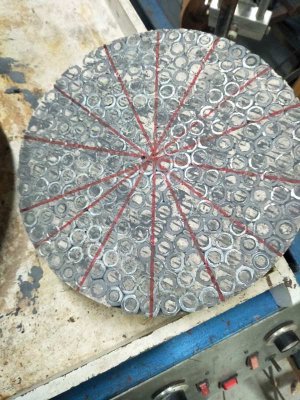
The red lines are for a quick visual check on the next grind.
The computed sagitta is 0.70383mm and I'm reading 0.618mm, close but no cigar.
